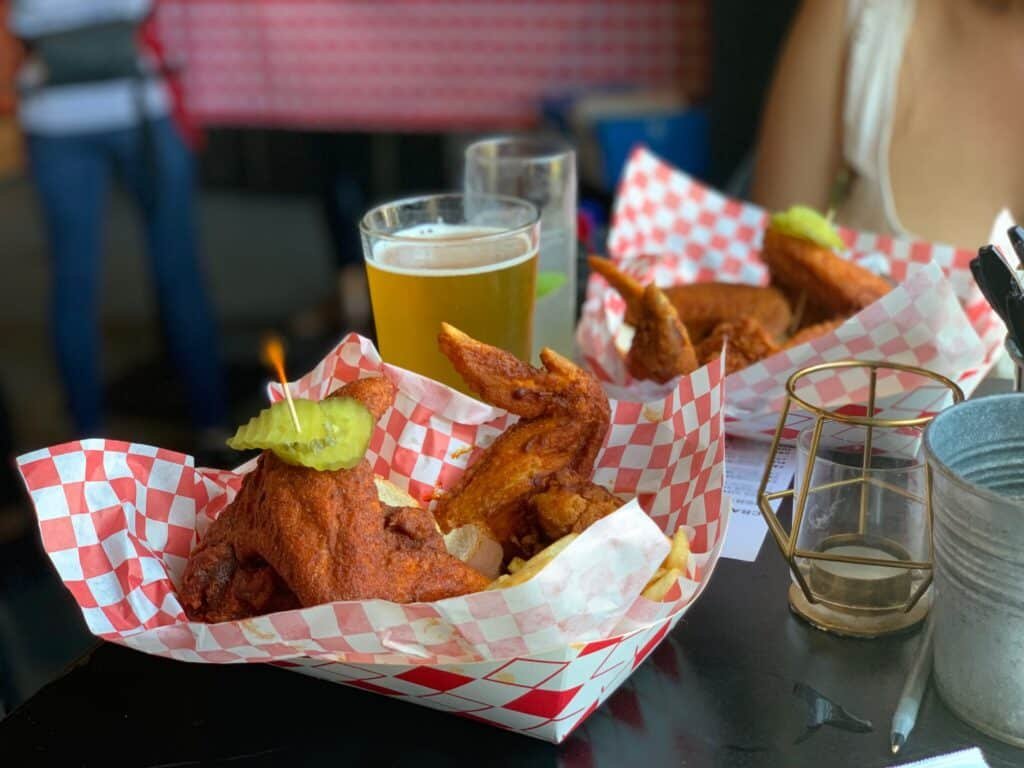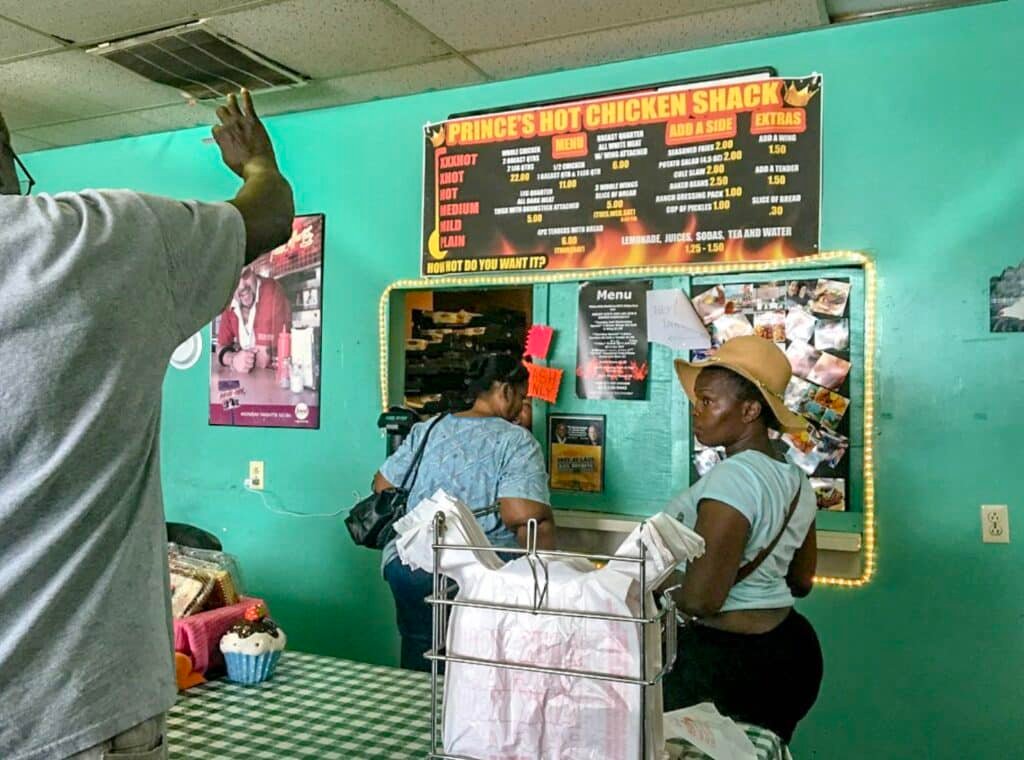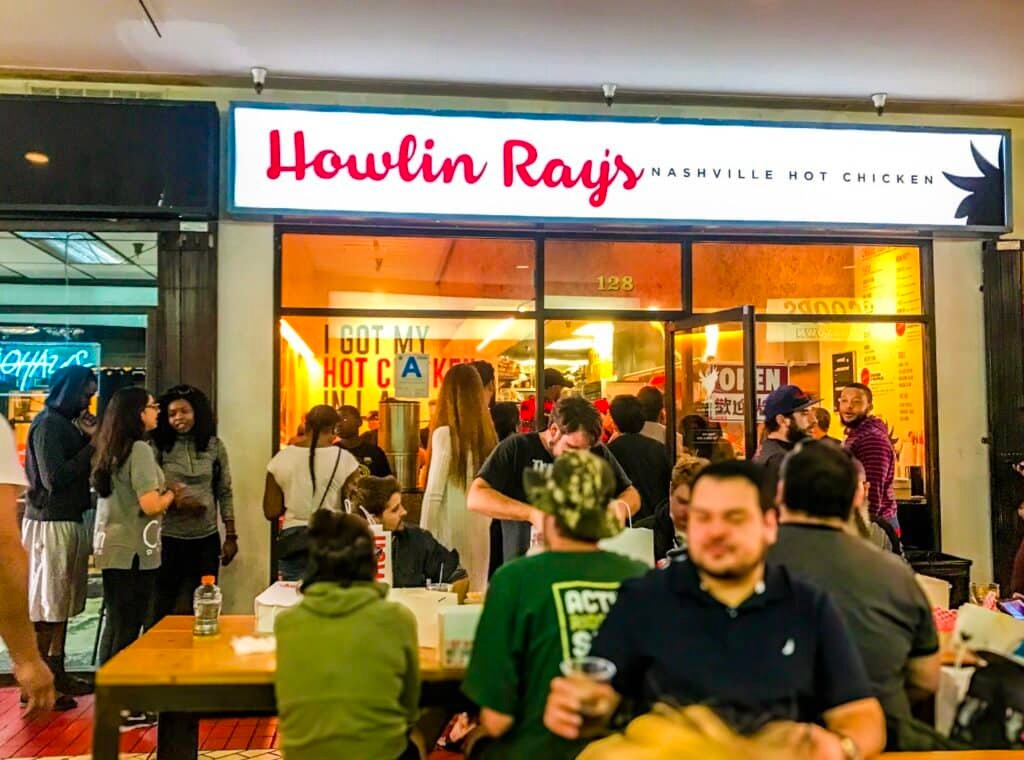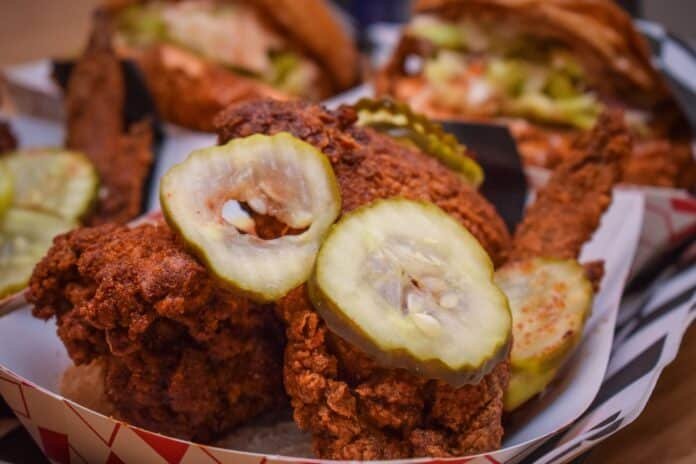The first time I ever had Kim Prince’s Nashville hot chicken—she’s the niece of André Prince Jeffries, the matriarch behind Nashville’s iconic, James Beard Award-winning Prince’s Hot Chicken Shack who’s finally opening up her first brick-and-mortar in Crenshaw—I was mesmerized and feeling the heat and, most importantly, feeling the privilege of eating her food.
And, by the way, not just kind of feeling the heat, like when I eat a Serrano pepper or habañero whole. No. That heat is a steady one that is only sometimes overwhelming. This… Well, I was actually sweating, my ears and face reddening. I had lost clarity about three bites in and a dizzy, disorientation overtook me. I had to pucker my lips to suck in air, vainly hoping it would cool the fire seeping across my mouth. And amid all this, I kept wanting—needing—to take another bite.
When it came to others using the name her family made and has harnessed for nearly 100 years, Kim was clear: “It’s a community, not a competition.” She was open to the idea of Nashville heat escaping its birth town, her family’s grasp, and expanding. She was willing to let it go and let it be. But there was and is a fiery caveat to that sweetness.
“The only thing is: if you slap the name ‘Nashville’ on it, it better bring the heat,” she said.

The complete obliteration of the use of the term ‘Nashville hot’
And now, let’s be honest, “Nashville hot” is being bastardized; not necessarily with malicious intent but because it is an easy marketing tactic, an appealing trend that makes it easy for chefs and restaurateurs to easily misuse.
For example, l love the spicy sweetbreads at Restauration; I even featured them as one of my favorite things I was eating. But they aren’t remotely near Nashville hot, despite being labeled as so. They’re just spicy. And that’s OK.
I genuinely appreciate the spicy chicken sandwich at Portuguese Bend, which comes with a warning that the sandwich is genuinely hot. But it is not remotely, on any level, near Nashville hot. It’s just spicy. And that’s OK.
I bring up places I truly admire and respect above to showcase that this isn’t about unsatisfactory food; it’s about food history and how we’re associating that history with the way we market our food. That’s what makes experiencing anything that is truly “Nashville hot” a privilege.

Nashville heat is an essential part of Black American history and food
The legend, at least according to Kim and countless family members, is that her great-great Uncle Thornton Prince got into a quarrel of sorts with a lover, causing the lover to dump what she thought was an unsavory amount of spice into his chicken rub. Come a few minutes after using it, his mouth was sweltering but his palate was forever changed.
Nashville hot chicken is a deeply geographic, deeply Southern, deeply Black American food. It connected the Black community in a time of Jim Crow and the Civil Rights movement; it still does so to this day. Like soul food itself, Nashville hot chicken is cooked in a history both ugly and beautiful.
When it comes to Nashville hot chicken out here, most locals think their proper introduction to this fiery piece of fried chicken came by way of Howlin’ Ray’s, a tiny-but-mighty bird shop tucked inside a mini-mall in Downtown Los Angeles’ Chinatown. It’s a shop, mind you, that owes its existence to the Prince family. With a line that rarely, if ever, dips under 45 minutes thanks to its cult-like following, Howlin’ and Kim Prince’s Hotville are the closest things you can score befitting Prince’s Hot Chicken Shack itself.
What Prince’s created, and, what Kim and Howlin’ have brought to the West Coast, is an oddly addicting piece of spicy fried chicken that shouldn’t be addicting, but most definitely is. And it’s special. It’s food that sat side-by-side with everything from the Nashville sit-ins of the 1960s to current love of uplifting racism in Tennessee.

‘Blastin’ your bird:’ Nashville hot is about heat and flavor—not just obliterating the palate with heat.
Its resilience shows up in the presence of the heat. It’s not the subtle heat of Memphis fried chicken—which you can experience a prime example of at Gus’s on Long Beach Boulevard—but a sweat-inducing heat, especially if you enter into the upper echelons of hot chicken’s heat scale. That scale, for the most part thanks to the history of Prince’s, is always on a six-figure scale when excluding the plain option: mild, medium, hot, extra hot, extra-extra hot and the fiery extra-extra-extra hot.
“There’s folks out there blastin’ their birds with ghost peppers and Carolina Reapers,” Kim once said, throwing shade at those throwing heat without skill. “The point isn’t just to bring heat; I can throw in pepper after pepper if that’s all I wanted to achieve. It’s about making you sweat but making you want to keep eating.”
So it isn’t just about bringing the heat but pairing what would typically be an ungodly fire to a perfected taste. If it’s just fire breathing across your palate, it’s not Nashville hot. If it’s great taste but little heat, it’s not Nashville hot.
And if you need a lesson to learn the distinction, we’re blessed that we no longer have to go to Nashville—you can just get a two-piece meal from Kim Prince herself.
Hotville Chicken is located at 4070 Marlton Avenue, Los Angeles, 90008.


